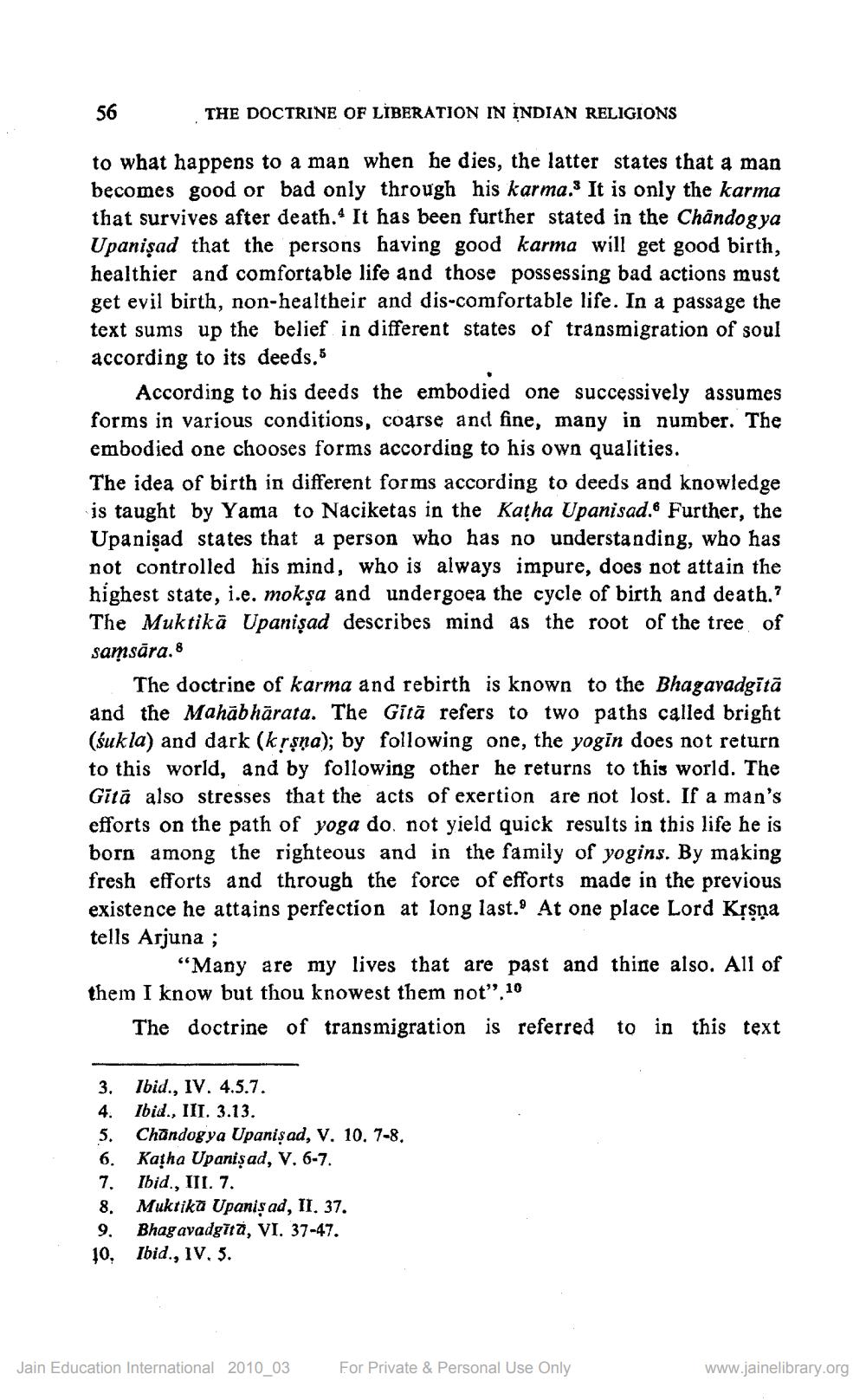________________
56
to what happens to a man when he dies, the latter states that a man becomes good or bad only through his karma. It is only the karma that survives after death. It has been further stated in the Chandogya Upanisad that the persons having good karma will get good birth, healthier and comfortable life and those possessing bad actions must get evil birth, non-healtheir and dis-comfortable life. In a passage the text sums up the belief in different states of transmigration of soul according to its deeds.5
THE DOCTRINE OF LIBERATION IN INDIAN RELIGIONS
According to his deeds the embodied one successively assumes forms in various conditions, coarse and fine, many in number. The embodied one chooses forms according to his own qualities.
The idea of birth in different forms according to deeds and knowledge is taught by Yama to Naciketas in the Katha Upanisad. Further, the Upanisad states that a person who has no understanding, who has not controlled his mind, who is always impure, does not attain the highest state, i.e. mokşa and undergoea the cycle of birth and death." The Muktika Upanisad describes mind as the root of the tree of samsāra. 8
The doctrine of karma and rebirth is known to the Bhagavadgītā and the Mahabharata. The Gità refers to two paths called bright (śukla) and dark (kṛṣṇa); by following one, the yogin does not return to this world, and by following other he returns to this world. The Gitä also stresses that the acts of exertion are not lost. If a man's efforts on the path of yoga do. not yield quick results in this life he is born among the righteous and in the family of yogins. By making fresh efforts and through the force of efforts made in the previous existence he attains perfection at long last. At one place Lord Kṛṣṇa tells Arjuna ;
"Many are my lives that are past and thine also. All of them I know but thou knowest them not",10
The doctrine of transmigration is referred to in this text
Ibid., IV. 4.5.7.
Ibid., III. 3.13.
3.
4.
5.
6. Katha Upanisad, V. 6-7.
7.
Ibid., III. 7.
Chandogya Upanisad, V. 10. 7-8.
8.
Muktika Upanisad, II. 37. Bhagavadgita, VI. 37-47. 10, Ibid., IV. 5.
9.
Jain Education International 2010_03
For Private & Personal Use Only
www.jainelibrary.org




